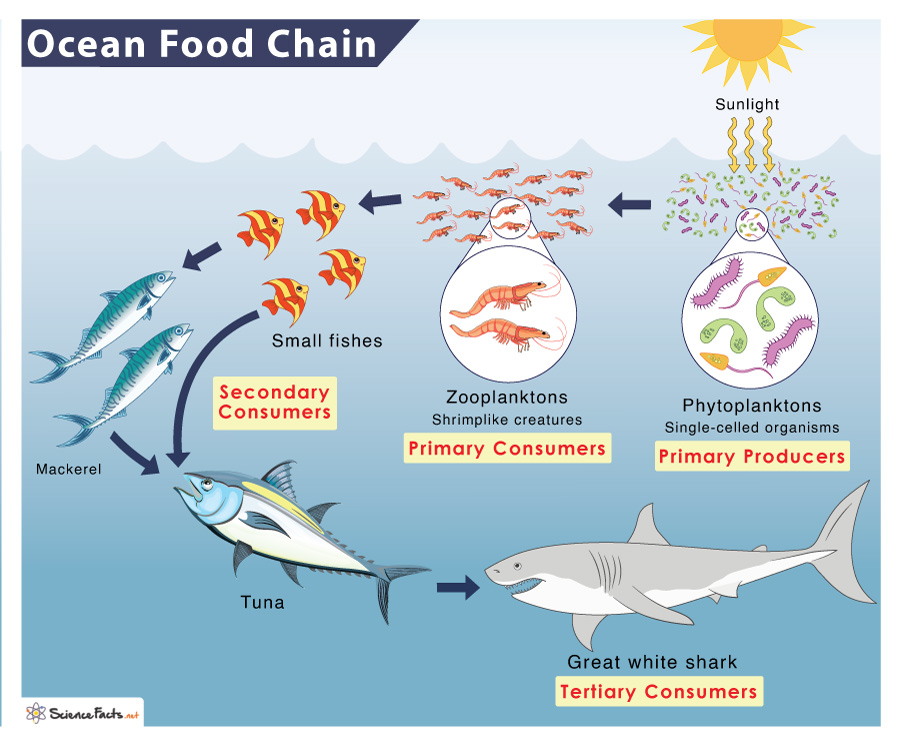Topic kelp forest ecosystems: Discover the wonders of kelp forest ecosystems, the underwater rainforests teeming with life and pivotal to ocean health and biodiversity.
Table of Content
- What are kelp forest ecosystems?
- Understanding Kelp Forests: Definition and Importance
- Geographic Distribution and Habitat Requirements
- Key Species and Biodiversity Within Kelp Forests
- Ecological Roles and Benefits of Kelp Forests
- Threats to Kelp Forest Ecosystems and Conservation Efforts
- YOUTUBE: David Attenborough: Save magical kelp forests
- Research and Monitoring: Advances and Discoveries
- Human Impacts and Interactions with Kelp Forests
- Restoration Projects and Success Stories
- Future of Kelp Forests: Challenges and Opportunities
- Educational Resources and How to Get Involved
What are kelp forest ecosystems?
Kelp forests are underwater ecosystems formed in shallow water by the dense growth of several different species known as kelp. These kelp are large brown algae that typically inhabit cool, relatively shallow waters close to the shore. There are about 30 different species of kelp, each with its own unique characteristics.
The growth of kelp in these forests occurs in dense groupings, much like a forest on land. They create a habitat that supports a diverse array of marine life.
Here are some key points about kelp forest ecosystems:
- Kelp forests are found in temperate and polar coastal regions around the world.
- They provide important ecological services such as nutrient cycling, carbon sequestration, and shoreline stabilization.
- Kelp forests are highly productive and support a wide variety of marine species.
- The canopy formed by the kelp provides shelter and food for many organisms, including fish, invertebrates, and marine mammals.
- They serve as important breeding and nursery grounds for various species.
- Many species, such as sea otters and kelp crabs, have close associations with kelp forests.
- Kelp forests are also a popular destination for diving and snorkeling enthusiasts due to their beauty and rich biodiversity.
In summary, kelp forest ecosystems are underwater habitats formed by the dense growth of kelp algae. They are valuable and diverse ecosystems that support a wide range of marine life and provide important ecological functions.
READ MORE:
Understanding Kelp Forests: Definition and Importance
Kelp forests are underwater ecosystems formed by kelp, a type of seaweed that grows in cold, nutrient-rich waters. These forests are not only remarkable for their beauty but also for their critical role in supporting marine biodiversity. They provide habitat, food, and nursery grounds for a wide array of marine organisms.
- Definition: Kelp forests are dense groupings of kelp plants, primarily composed of species from the order Laminariales, that create a unique and vital underwater habitat.
- Importance for Biodiversity: These ecosystems are known as the "rainforests of the sea" because of their incredible productivity and the diverse life forms they support, including fish, invertebrates, and marine mammals.
- Ecological Role: Kelp forests help to stabilize the sea floor, protect coastlines from erosion by absorbing wave energy, and provide one of the fastest carbon sequestration rates among marine habitats.
- Economic Value: Beyond their ecological benefits, kelp forests are also valuable to humans, supporting commercial fisheries, recreational activities, and even serving as a source for pharmaceuticals and food.
Understanding the dynamics of kelp forest ecosystems is essential for their conservation and the sustainable management of their resources. Despite their importance, these ecosystems face threats from climate change, pollution, and overfishing, making their study and protection more important than ever.
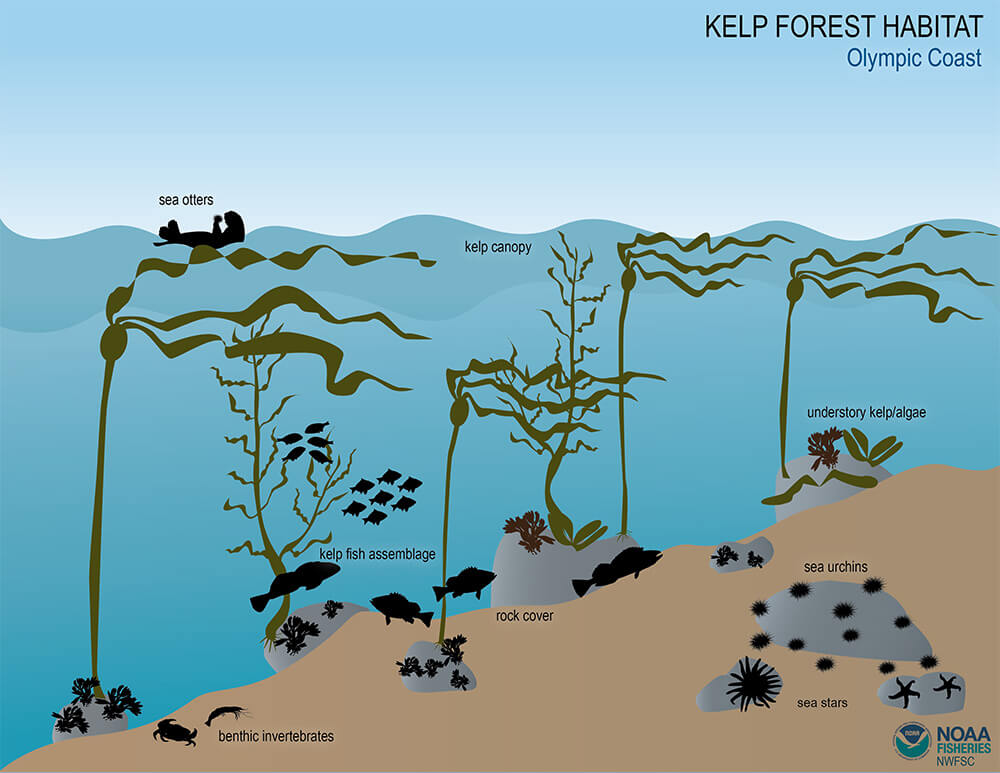
Geographic Distribution and Habitat Requirements
Kelp forests are primarily found in cold, clear waters near coastal areas around the globe, particularly in the Northern and Southern Hemispheres. These ecosystems thrive in nutrient-rich waters where sunlight can penetrate to the ocean floor, allowing kelp to photosynthesize and grow efficiently.
- Global Distribution: Kelp forests are prevalent along the coasts of the North Pacific, with significant presence off the coasts of California, Alaska, and Japan. In the Southern Hemisphere, they are found along the shores of South America, South Africa, Australia, and New Zealand.
- Habitat Requirements:
- Water Temperature: Kelp forests prefer cold water temperatures, typically between 5°C and 20°C.
- Light: Adequate sunlight is essential for photosynthesis. Kelp forests usually develop in clear waters with shallow depths that allow light penetration.
- Nutrients: High nutrient levels, especially nitrogen and phosphorus, are critical for kelp growth. Upwelling areas, where deep, nutrient-rich waters rise to the surface, are ideal for kelp forest development.
- Substrate: Kelp plants anchor themselves to rocky substrates using holdfasts, which require solid surfaces for attachment. Sandy or muddy bottoms are unsuitable for kelp forest establishment.
- Adaptability: While kelp forests have specific requirements, some kelp species are adaptable to a range of conditions, allowing for diverse forest structures and distributions.
The geographical distribution and habitat requirements of kelp forests highlight the importance of coastal environments and oceanographic conditions in supporting these rich and productive ecosystems. Protection of these habitats is crucial for the maintenance of biodiversity and the health of marine environments.
Key Species and Biodiversity Within Kelp Forests
Kelp forests are known for their rich biodiversity, supporting a wide range of marine species that rely on these ecosystems for habitat, food, and protection. The key species within kelp forests include a variety of algae, invertebrates, fish, birds, and marine mammals, each playing a crucial role in the ecosystem"s health and stability.
- Algae: Besides the dominant kelp species, other types of algae such as red and green algae contribute to the forest"s undergrowth, providing additional food and habitat resources.
- Invertebrates: Sea urchins, starfish, crustaceans (such as crabs and lobsters), and various mollusks (including abalones and snails) are critical for nutrient cycling and as prey for larger species.
- Fish: Kelp forests are vital nursery grounds for numerous fish species, including rockfish, herring, and kelp bass, which find food and shelter among the kelp.
- Birds: Seabirds, such as cormorants and puffins, rely on kelp forests for nesting sites and as rich feeding grounds teeming with fish and invertebrates.
- Marine Mammals: Otters, seals, and sea lions use kelp forests for foraging and as shelter from predators. Otters, in particular, play a significant role in maintaining the health of kelp forests by preying on sea urchins, which can overgraze kelp if left unchecked.
The interdependence of these species within kelp forest ecosystems creates a complex and dynamic web of life. The biodiversity found in kelp forests is not only vital for the marine environment but also benefits humans by supporting fisheries and protecting coastlines. Conservation efforts are crucial to protect these ecosystems from threats such as pollution, climate change, and overfishing, ensuring that kelp forests continue to thrive and support their diverse inhabitants.
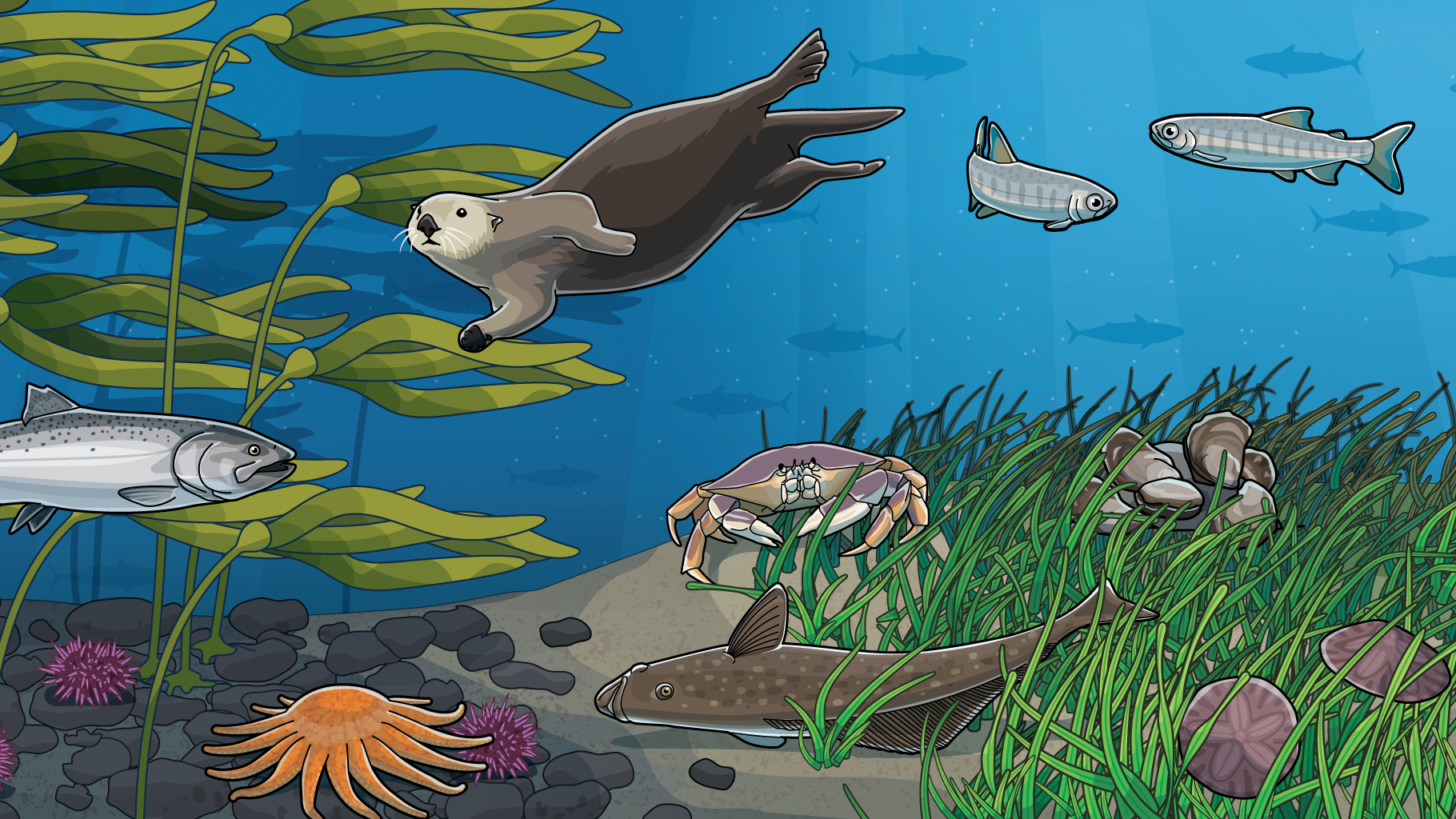
Ecological Roles and Benefits of Kelp Forests
Kelp forests are among the most productive and dynamic ecosystems on Earth, offering a wide range of ecological benefits that extend far beyond their boundaries. They play a crucial role in maintaining marine biodiversity, protecting coastlines, and supporting global carbon cycles.
- Carbon Sequestration: Kelp forests are highly efficient at capturing carbon dioxide from the atmosphere, helping to mitigate the effects of climate change by storing carbon in their biomass and the surrounding sediment.
- Biodiversity Hotspots: These underwater forests provide habitat, food, and nursery grounds for thousands of marine species, including fish, invertebrates, and mammals, enhancing marine biodiversity and ecosystem resilience.
- Coastal Protection: The physical structure of kelp dampens wave energy, reducing coastal erosion and protecting shorelines from storm damage.
- Nutrient Cycling: Kelp forests contribute to ocean nutrient cycles by recycling nutrients through their growth and decay, supporting surrounding marine life.
- Economic Benefits: Beyond their ecological roles, kelp forests support commercial fisheries and recreational activities, contributing significantly to local economies.
- Water Quality Improvement: By absorbing nutrients and particulate matter, kelp forests can improve water clarity and quality, benefiting both marine organisms and human activities.
The ecological roles and benefits of kelp forests highlight their importance to marine and human life. Protecting these ecosystems is vital for sustaining their benefits, requiring efforts to mitigate threats such as climate change, pollution, and overharvesting. Through conservation and sustainable management, we can ensure that kelp forests continue to thrive, supporting their rich biodiversity and the many services they provide.
Threats to Kelp Forest Ecosystems and Conservation Efforts
Kelp forest ecosystems face a variety of threats that can affect their health, diversity, and productivity. These threats range from local to global scales, impacting not only the kelp forests themselves but also the vast array of species that depend on them. Conservation efforts are crucial to mitigate these threats and ensure the resilience and sustainability of these vital ecosystems.
- Climate Change: Rising sea temperatures and ocean acidification pose significant threats to kelp forests by disrupting the delicate balance of conditions needed for their growth and survival.
- Pollution: Runoff containing chemicals, plastics, and other pollutants can damage kelp forests and the marine life that relies on them for habitat and food.
- Overfishing: The removal of key predator species can lead to imbalances in the ecosystem, such as the proliferation of sea urchins, which can overgraze and decimate kelp forests.
- Habitat Destruction: Coastal development, dredging, and anchor damage can physically destroy kelp habitats, leading to loss of biodiversity and ecosystem services.
- Invasive Species: Non-native species can outcompete native kelp and alter the structure and function of kelp forest ecosystems.
Conservation Efforts:
- Protected Areas: Establishing marine protected areas (MPAs) to safeguard critical kelp forest habitats from human activities.
- Restoration Projects: Initiatives to replant and restore degraded kelp forests, often involving community participation and scientific research.
- Regulations: Implementing fishing quotas and restrictions on harmful activities to maintain ecological balance and protect biodiversity.
- Research and Monitoring: Continuous study and monitoring of kelp forest ecosystems to understand their dynamics, threats, and the effectiveness of conservation measures.
- Public Awareness: Educating the public about the importance of kelp forests and how to reduce human impact through sustainable practices.
Through these and other conservation efforts, there is hope for the future of kelp forest ecosystems. By addressing the threats they face and promoting sustainable management, we can help ensure that kelp forests continue to thrive, supporting their unique biodiversity and the many benefits they provide to humans and the marine environment.

David Attenborough: Save magical kelp forests
Conservation: Discover the awe-inspiring world of conservation in this captivating video that takes you on a journey to protect the planet. Get inspired by the dedicated individuals working tirelessly to preserve our natural wonders and find out how you can make a difference today!
Kelp Forests: The Sequoias of the Sea
Biodiversity: Dive into the extraordinary realm of biodiversity with this mesmerizing video that showcases the sheer variety of life on Earth. From vibrant rainforests to magnificent coral reefs, witness the wonders of nature and learn why preserving biodiversity is crucial for the planet\'s survival. Don\'t miss this eye-opening exploration!
Research and Monitoring: Advances and Discoveries
Research and monitoring play pivotal roles in understanding kelp forest ecosystems, leading to significant advances and discoveries that inform conservation strategies and management practices. Scientists and researchers utilize a variety of technologies and methodologies to study these complex habitats and their inhabitants.
- Remote Sensing and Satellite Imagery: These tools have revolutionized the way kelp forests are monitored, allowing for large-scale observation of kelp distribution, health, and changes over time.
- Genetic Studies: Advances in genetic research have helped scientists understand the diversity and resilience of kelp species, as well as their adaptation to changing environmental conditions.
- Ecological Modeling: Computational models are used to predict the impacts of climate change, pollution, and human activities on kelp forests, aiding in the development of effective management strategies.
- Biodiversity Assessments: Detailed studies of species composition and interactions within kelp forests have revealed the complexity of these ecosystems and the importance of preserving biodiversity.
- Impact of Climate Change: Ongoing research investigates how warming oceans, acidification, and changing ocean currents affect kelp forests, providing critical data for conservation efforts.
- Restoration Techniques: Innovative approaches to kelp forest restoration, including reseeding and the use of artificial structures for kelp attachment, are being tested and implemented.
The findings from research and monitoring efforts are crucial for informing policy, enhancing conservation measures, and raising public awareness about the importance of kelp forests. By continuing to advance our understanding of these ecosystems, we can better protect them and ensure their resilience in the face of environmental changes.
Human Impacts and Interactions with Kelp Forests
Human activities have both direct and indirect impacts on kelp forest ecosystems, influencing their health, distribution, and biodiversity. Understanding these interactions is crucial for implementing measures to protect and sustainably manage these vital marine habitats.
- Coastal Development: Construction and land use changes near coastlines can lead to sedimentation and pollution that harm kelp forests by blocking sunlight and smothering the kelp.
- Pollution: Runoff from agriculture, industry, and urban areas introduces toxins, nutrients, and debris into the ocean, adversely affecting kelp health and water quality.
- Fishing Practices: Some fishing methods, like trawling, can physically damage kelp forests and alter marine ecosystems by removing key species.
- Climate Change: Increases in sea temperature and changes in ocean chemistry due to human-induced climate change are among the most significant threats to kelp forests worldwide.
- Recreational Activities: Boating, diving, and other marine recreation can physically damage kelp and disturb marine life if not conducted responsibly.
- Aquaculture: The expansion of marine aquaculture near kelp forests can lead to competition for space and resources, as well as increased risk of disease and pollution.
Conservation Efforts:
- Marine Protected Areas (MPAs): Establishing MPAs helps protect kelp forests from damaging activities and promotes their recovery and conservation.
- Sustainable Fisheries Management: Implementing sustainable fishing practices can reduce impacts on kelp ecosystems and help maintain biodiversity.
- Pollution Control: Efforts to reduce pollution sources, such as stricter regulations and improved waste management, are vital for protecting kelp forests.
- Public Education and Engagement: Raising awareness about the importance of kelp forests and promoting responsible interaction with these ecosystems are key to their preservation.
By addressing human impacts through conservation, regulation, and education, we can ensure the continued health and productivity of kelp forest ecosystems, benefiting marine life and human communities alike.

Restoration Projects and Success Stories
Kelp forest restoration has become a critical and successful endeavor in marine conservation, aiming to rebuild and rejuvenate these vital ecosystems. Through innovative techniques and community involvement, various projects around the world have shown promising results, offering hope for the future of kelp forests.
- Replanting Efforts: Scientists and volunteers have engaged in replanting kelp in areas where forests have been depleted, using kelp grown in nurseries or directly sowing spores to encourage natural regrowth.
- Sea Urchin Removal: In locations where sea urchin populations have exploded and decimated kelp forests, targeted removals have helped to rebalance the ecosystem, allowing kelp to recover.
- Artificial Reefs: Creating artificial structures that kelp can attach to has proven effective in areas where the natural substrate has been compromised, providing new habitats for kelp and associated marine life.
- Community Involvement: Local communities, including indigenous groups and recreational divers, have played a significant role in restoration projects, contributing to the protection and monitoring of kelp forests.
- Policy and Protection: Enhanced legal protections and the establishment of marine protected areas (MPAs) have been crucial in safeguarding kelp forests from further degradation and promoting their recovery.
Success Stories:
- In California, efforts to cull sea urchin populations and replant kelp have led to significant regrowth in several areas, demonstrating the resilience of kelp ecosystems when given a chance to recover.
- In Tasmania, where kelp forests have been severely affected by warming waters, restoration projects have focused on breeding heat-tolerant kelp strains, showing promising early results for adapting to climate change.
These restoration projects and success stories highlight the potential for recovery and sustainability of kelp forest ecosystems when supported by science, policy, and community engagement. They serve as a beacon of hope for conservation efforts worldwide, emphasizing the importance of protecting these underwater forests for future generations.
Future of Kelp Forests: Challenges and Opportunities
The future of kelp forests is at a critical juncture, facing both significant challenges and unique opportunities. Addressing these challenges and leveraging opportunities will be key to ensuring the resilience and sustainability of these vital marine ecosystems.
- Climate Change: The foremost challenge is the impact of climate change, including ocean warming and acidification, which threaten kelp forest health and survival. Developing strategies to mitigate these effects is crucial.
- Pollution and Habitat Loss: Pollution from agricultural runoff, plastics, and chemicals, along with habitat destruction from coastal development, continue to pose threats that require effective management and regulation.
- Overfishing and Resource Management: Sustainable fishing practices and effective resource management are essential to balance human needs with the preservation of kelp ecosystems and their inhabitants.
- Invasive Species: Managing and controlling invasive species that compete with kelp for light and nutrients is critical for the health of kelp forests.
Opportunities:
- Restoration and Conservation: Advances in restoration techniques and conservation strategies offer hope for the recovery and protection of kelp forests. Community involvement and education are key components of successful projects.
- Climate Change Adaptation: Research into kelp species that are more resilient to climate change effects can help future-proof kelp forests against environmental changes.
- Economic Opportunities: Sustainable kelp farming and harvesting present economic opportunities that can benefit coastal communities while supporting ecosystem health.
- Policy and Global Cooperation: International cooperation and strong policies are essential to address the global challenges facing kelp forests, emphasizing their importance for biodiversity and carbon sequestration.
The future of kelp forests hinges on our ability to address these challenges through innovative research, collaborative conservation efforts, and sustainable management practices. By doing so, we can secure the health and productivity of these ecosystems for future generations, ensuring that they continue to play their vital role in marine biodiversity and the global environment.
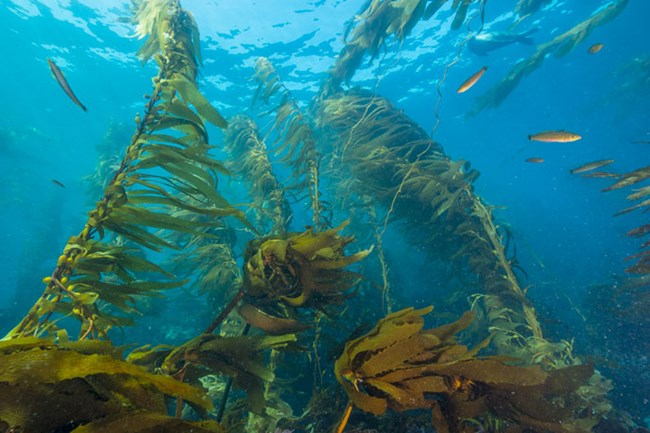
READ MORE:
Educational Resources and How to Get Involved
The conservation and study of kelp forest ecosystems are vital for maintaining the biodiversity and health of our oceans. To support these efforts, a variety of educational resources are available for those interested in learning more and getting involved.
Learning Resources
- Interactive E-Books and Games: Designed for both students and educators, these resources offer insights into the complex relationships within kelp forest ecosystems, available through platforms like the Monterey Bay Aquarium.
- Virtual Reality Videos: Immerse yourself in the underwater world of kelp forests and learn about the species that inhabit these ecosystems through engaging virtual reality experiences.
- Lesson Plans and Webinars: Educators can access comprehensive lesson plans and participate in webinars to integrate kelp forest studies into their curriculum, focusing on the importance of these ecosystems and conservation efforts.
Getting Involved
Participation in conservation efforts and citizen science projects can make a significant difference in the preservation of kelp forests. Here are a few ways to get involved:
- Volunteer for Restoration Projects: Join local organizations in their efforts to restore damaged kelp forests. Activities may include seedling cultivation and transplanting kelp to depleted areas.
- Citizen Science Programs: Engage in monitoring and data collection efforts that help scientists track the health and biodiversity of kelp forest ecosystems.
- Advocate for Marine Protected Areas: Support the establishment and enforcement of marine protected areas (MPAs) that include kelp forests to ensure their long-term conservation.
Educational Outreach
Sharing knowledge and raising awareness about the importance of kelp forests are crucial steps toward their conservation. Consider participating in educational outreach by:
- Organizing or attending talks and workshops on marine conservation topics related to kelp forests.
- Creating and sharing informative content on social media to spread awareness about the ecological roles of kelp forests and the threats they face.
- Supporting organizations and initiatives dedicated to marine conservation through donations or by spreading their message.
By engaging with these resources and getting involved in conservation efforts, individuals can contribute to the protection and understanding of kelp forest ecosystems, ensuring their preservation for future generations.
Exploring the wonders of kelp forest ecosystems reveals the interconnectedness of our planet. By learning and engaging, we can all play a role in preserving these underwater forests for the health of our oceans and future generations.
:max_bytes(150000):strip_icc()/489034241_5-56af62885f9b58b7d0183204.jpg)
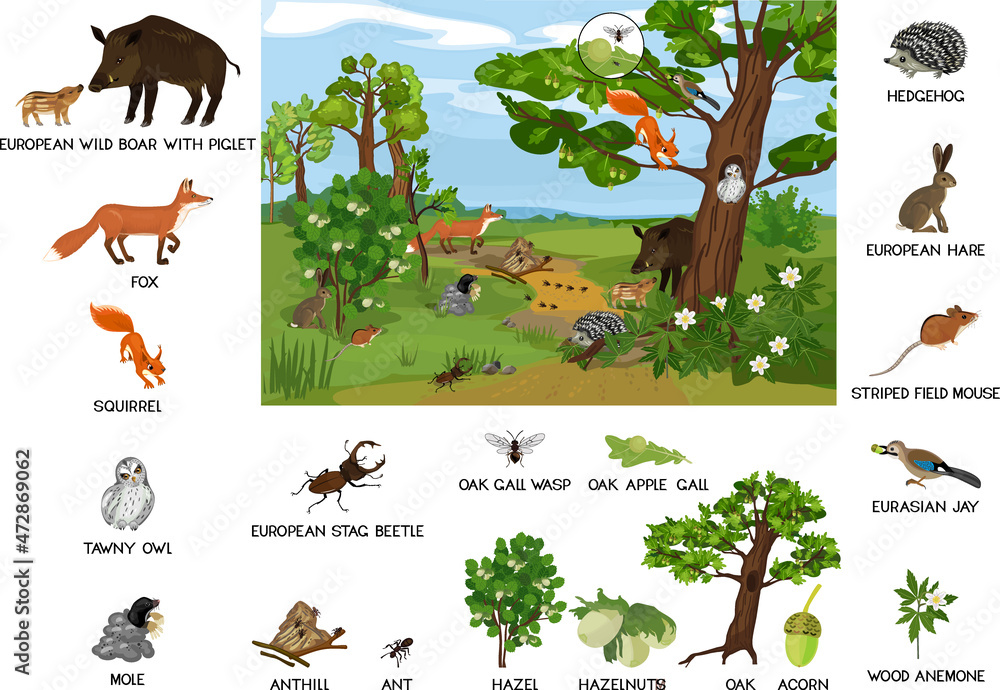


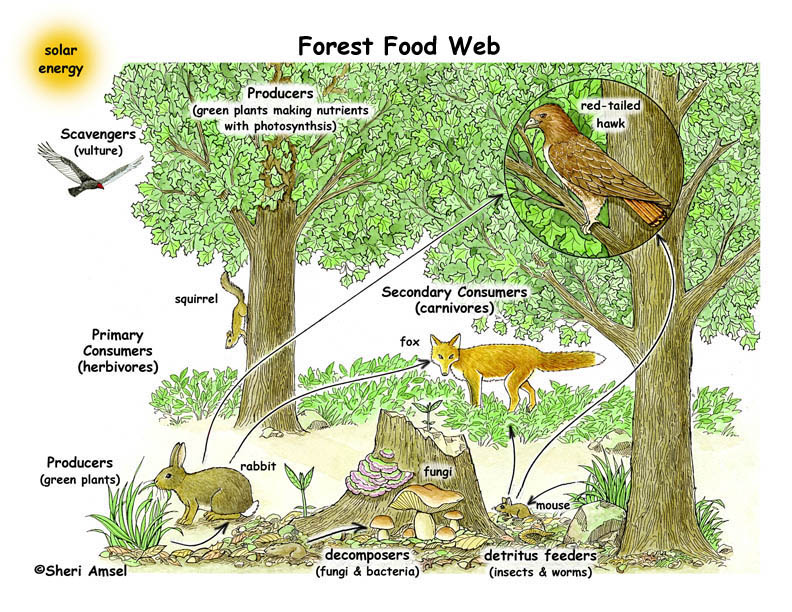
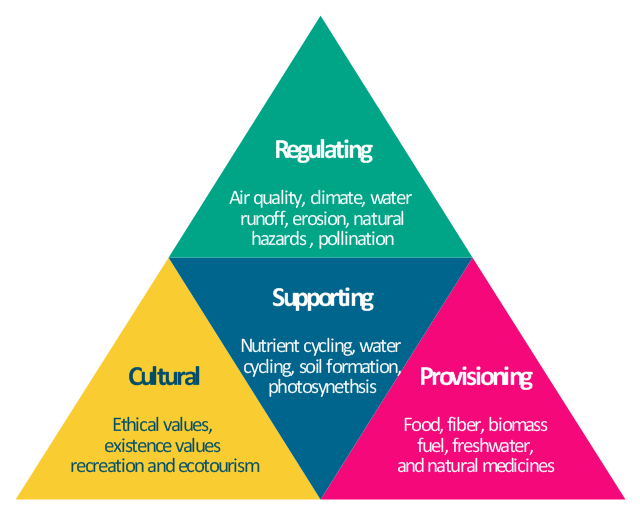

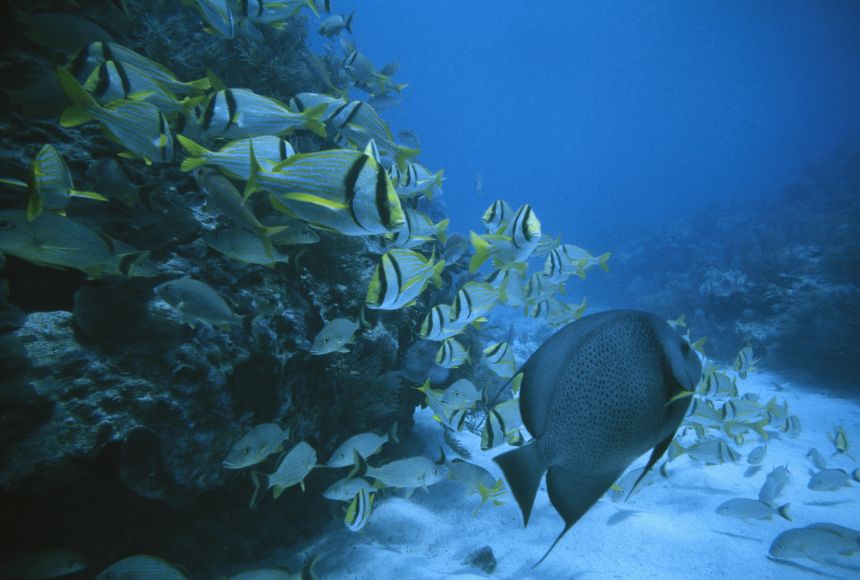
:max_bytes(150000):strip_icc()/3-3612f0362edd4dbcb192589a466f2cb4.jpg)
